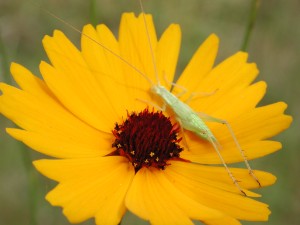Coastalplain tickseed facts for kids
Quick facts for kids Coastalplain tickseed |
|
|---|---|
 |
|
| Scientific classification | |
| Genus: |
Coreopsis
|
| Species: |
gladiata
|
| Synonyms | |
|
Other Names
Campylotheca helianthoides Endl.
Coreopsis angustifolia Dryand. ex Aiton 1789 not L. 1753 Coreopsis callosa Bertol. Coreopsis dichotoma Michx. Coreopsis falcata F.E.Boynton Coreopsis floridana E.B.Sm. Coreopsis helianthoides Beadle Coreopsis linifolia Nutt. Coreopsis longifolia Small Coreopsis oniscicarpa Fernald Coreopsis saxicoloidea Sherff |
|
The coastalplain tickseed (scientific name: Coreopsis gladiata) is a beautiful wild flower. It belongs to the Coreopsis group, which are often called "tickseeds." This name comes from the way their seeds look a bit like tiny ticks!
This plant is a perennial herb. This means it lives for more than two years. It grows back each year from its roots. It is part of the sunflower family, which includes many well-known flowers.
Where It Grows
The coastalplain tickseed is native to North America. You can find it mostly in the southeastern parts of the country. Its natural home stretches from eastern Texas all the way to southeastern Virginia.
Its Favorite Places
This plant loves to grow in wet areas. It thrives in places like swamps and bogs. You can also spot it in low, wet spots called depressions. Sometimes, it grows in sandy, open woodlands known as pine barrens. These are all places where the soil stays moist.
What It Looks Like
The Coreopsis gladiata is a medium-sized plant. It can grow up to 70 centimeters (about 28 inches) tall. That's almost as tall as a typical school desk!
Its Flowers
The flowers of the coastalplain tickseed are very pretty. They have bright yellow ray florets. These are the petal-like parts that spread out from the center. In the middle of the flower, you'll see purple disc florets. These are the tiny, tightly packed flowers that make up the center of the bloom. This mix of yellow and purple makes it stand out.

